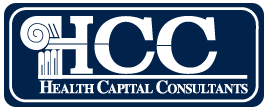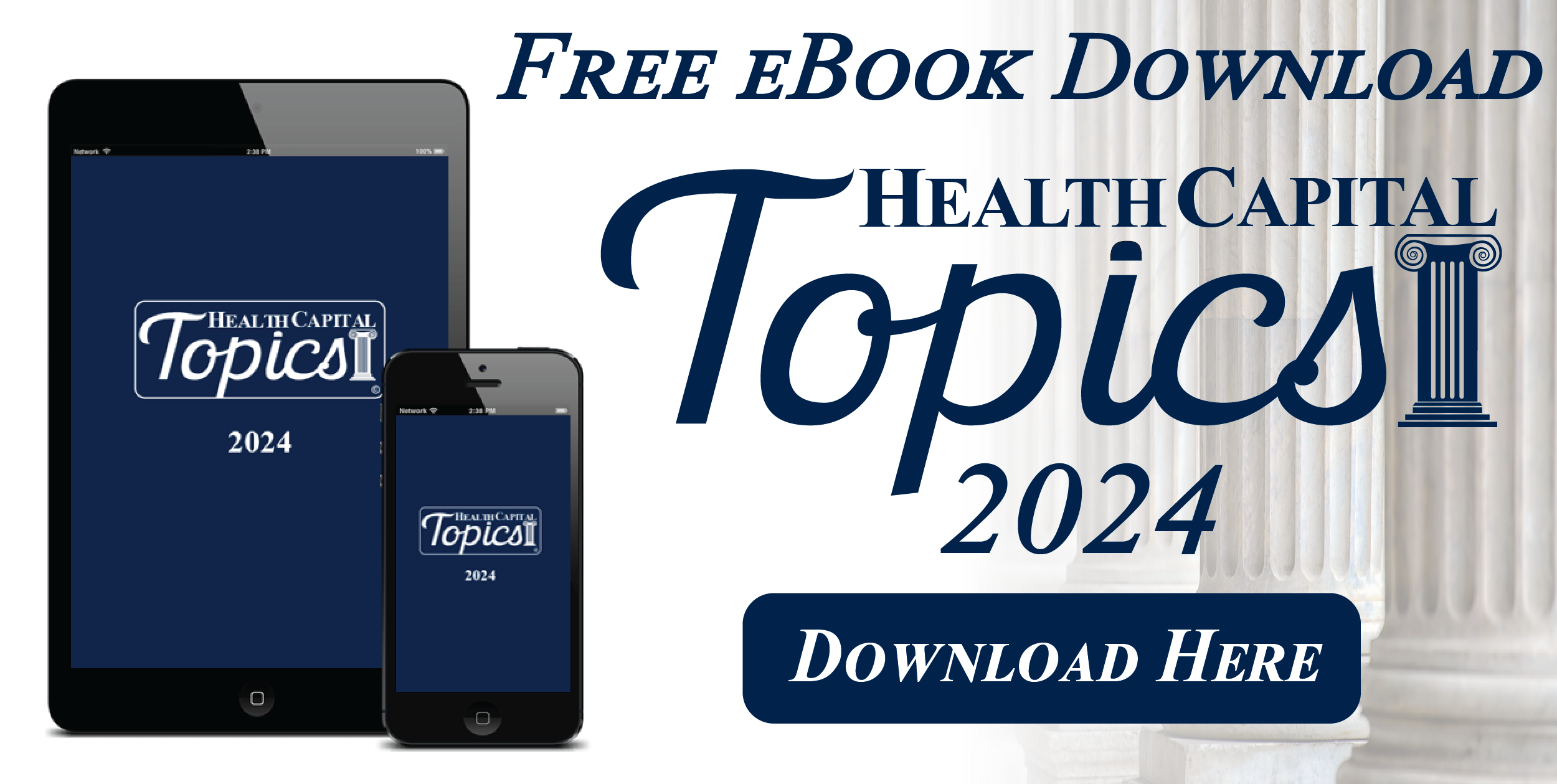On October 23, 2025, both Democratic and Republican lawmakers expressed support during a Senate Health, Education, Labor, and Pensions (HELP) Committee hearing for reforming the 340B Drug Discount Program.1 Although senators acknowledged that any reform would necessitate an intentional, considered approach to mitigate unintended consequences, the bipartisan agreement (particularly during a government shutdown deadlocked on healthcare) indicates that changes to the program may be on the horizon. This Health Capital Topics article outlines the 340B program, discusses issues that have made the program controversial, and discusses potential reform options.
Few programs in the U.S. healthcare industry have become as controversial as the 340B Drug Pricing Program. The program, enacted in 1992, emerged as a remedy for an unforeseen side effect of the Medicaid Drug Rebate Program (MDRP).2 After the MDRP went into effect, pharmaceutical manufacturers stopped offering voluntary discounts to safety-net providers to avoid a ripple effect on other pricing. Congress responded with the 340B program, mandating that manufacturers provide these deep discounts as a condition of participation in Medicaid and Medicare Part B.3 At its heart, the program was designed with a seemingly simple goal: to help providers serving a disproportionate number of low-income and uninsured patients by requiring drug manufacturers to sell outpatient drugs to them at significantly discounted prices.4 The idea was to allow these safety-net hospitals and clinics to “stretch scarce federal resources as far as possible, reaching more eligible patients and providing more comprehensive services for the communities that they serve.”5
The 340B Drug Pricing Program, currently administered by the Health Resources and Services Administration (HRSA),6 operates through a mechanism of deep discounts on outpatient drugs for eligible healthcare providers known as “covered entities.” These covered entities, which include safety-net hospitals and federally qualified health centers (FQHCs), serve a disproportionately high number of low-income and uninsured patients.7 The process begins with drug manufacturers agreeing to provide these discounts as a condition of their participation in Medicare and Medicaid. The covered entity then purchases the outpatient drugs (inpatient drugs are not covered) at the discounted 340B price.8 For eligible patients, the drug is dispensed either through the entity’s own pharmacy or a contract pharmacy at a discounted/free price.9 The crucial element of the program is the “spread” – the difference between the discounted purchase price and the amount the covered entity bills the patient’s insurance.10 This revenue allows providers to generate funds to subsidize care for uninsured patients and expand services such as mental health clinics or immunization programs.
The 340B program has expanded exponentially since its inception over 30 years ago, growing from 389 covered entities in 1992 to 5,085 in 2022.11 As of 2023, there were over 53,000 registered 340B care sites, nearly double the number of sites in 2014.12 In 2023, covered entities purchased over $66 billion worth of covered outpatient drugs.13
Along with this growth (and the accompanying growth in federal spending14) has been increasing concern over the integrity of the 340B program. Critiques of the program include:
-
Ambiguity related to 340B statutory language;15
-
Gaps in governmental oversight;16
-
A lack of transparency regarding “the actual 340B prices and whether manufacturers are providing the required discounts”;17
-
“[W]orsening generic drug shortages”;18
-
The use of contract pharmacies;19
-
“[I]ncentivizing hospitals to shift care from underserved areas to wealthier communities”;20
-
Incentivizing hospitals “to vertically consolidate in order to maximize their discounts”;21
-
The beneficiary of the savings, as there is no requirement that any of the discounted drug prices be passed on to patients;22 and
-
Entities receiving prohibited “duplicate discounts,” i.e., discounts from both 340B and MDRP.23
Numerous 340B reforms have been proposed and considered over the decades, at the state and federal level, with few proposals acted upon. During the HELP October 23rd Committee hearing, senators “reviewed findings and limited recommendations issued over the last few years by the Government Accountability Office (GAO) and the Congressional Budget Office (CBO).”24 For example, the GAO has made 20 recommendations to improve the 340B program since 2011, only five of which have been implemented.25 One of the main hurdles is that “[t]he government currently lacks sufficient oversight to address these concerns,” according to the GAO.26
Lawmakers seemed to largely agree that there should be a statutory requirement that covered entities report how their savings are being used to serve their at-need patient populations.27 Some of the initiatives mentioned during the hearing that appeared to have bipartisan support included increasing transparency on program revenue generation and spending, additional HRSA funding for audits, and limitations on hospital-affiliated outpatient facilities.28
While there is no timeline for 340B reforms, Senator Roger Marshall (R-Kan.) stated his hope that reform legislation would be passed out of the HELP Committee before the Christmas recess.29 Nevertheless, some 340B reform efforts are already underway. For example, the Trump Administration is readying a pilot program, slated to commence in 2026, in which drug manufacturers issue rebates, rather than upfront discounts, to covered entities.30 The voluntary program, which will be limited to ten drugs, will allow the government to test the effects of rebates, rather than discounts, on the 340B program.31
Today, the 340B Drug Pricing Program remains an indispensable, yet deeply divisive, fixture of the U.S. healthcare delivery system. For its proponents, it is a crucial lifeline for safety-net providers, enabling them to offer services that their financially fragile communities would otherwise lose. For its critics, it is a bloated and opaque program that has been exploited for profit and needs fundamental reform. The bipartisan momentum emerging from the October 23rd HELP Committee hearing, combined with the Trump Administration’s rebate pilot program, suggests that meaningful changes to 340B may finally be within reach. However, the challenge for lawmakers will be striking a balance between addressing legitimate concerns about program integrity and transparency while preserving the financial lifeline that many safety-net providers depend upon to serve vulnerable populations. Healthcare organizations that participate in or are affected by the 340B program should monitor these reform efforts closely and prepare for potential changes to program requirements, oversight mechanisms, and revenue models that could emerge as early as 2026.
“The 340B Program: Examining Its Growth and Impact on Patients” U.S. Senate Committee on Health, Education, Labor & Pensions, October 23, 2025, https://www.help.senate.gov/hearings/the-340b-program-examining-its-growth-and-impact-on-patients (Accessed 10/27/25).
“The 340B Drug Pricing Program: How It Works and Why It’s Controversial” The Commonwealth Fund, August 6, 2025, https://www.commonwealthfund.org/publications/explainer/2025/aug/340b-drug-pricing-program-how-it-works-and-why-its-controversial#:~:text=How%20does%20the%20340B%20Drug,manufacturers%20stopped%20offering%20voluntary%20discounts. (Accessed 10/27/25).
“340B Drug Pricing Program Overview” 340B Health, https://www.340bhealth.org/members/340b-program/overview/ (Accessed 10/27/25).
“The 340B Drug Pricing Program: How It Works and Why It’s Controversial” The Commonwealth Fund, August 6, 2025, https://www.commonwealthfund.org/publications/explainer/2025/aug/340b-drug-pricing-program-how-it-works-and-why-its-controversial#:~:text=How%20does%20the%20340B%20Drug,manufacturers%20stopped%20offering%20voluntary%20discounts. (Accessed 10/27/25).
“2023 340B Covered Entity Purchases” Health Resources & Services Administration, October 2024, https://www.hrsa.gov/opa/updates/2023-340b-covered-entity-purchases (Accessed 10/27/25).
The U.S. Department of Health & Human Services (HHS) proposed budget for fiscal year 2026 moves oversight of 340B to the Centers for Medicare & Medicaid Services. “Fiscal Year 2026: Budget in Brief” U.S. Department of Health & Human Services, available at: https://www.documentcloud.org/documents/25958360-fy-2026-budget-in-brief/?mode=document#document/p29 (Accessed 10/27/25), p. 26-27.
The Commonwealth Fund, August 6, 2025.
“2023 340B Covered Entity Purchases” Health Resources & Services Administration, October 2024, https://www.hrsa.gov/opa/updates/2023-340b-covered-entity-purchases (Accessed 10/27/25).
The Commonwealth Fund, August 6, 2025.
“The unintended consequences of the 340B safety‐net drug discount program” By Samuel Thomas and Kevin Schulman, Health Services Research, Vol. 55, No. 2 (2020), https://pmc.ncbi.nlm.nih.gov/articles/PMC7080379/#:~:text=Kevin%20Schulman%2C%20MD&text=Issue%20date%202020%20Apr.&text=The%20340B%20Drug%20Pricing%20Program,low%E2%80%90income%20and%20uninsured%20patients. (Accessed 10/27/25).
The Commonwealth Fund, August 6, 2025.
“Overview of the 340B Drug Discount Program” Congressional Research Service, In Focus, October 14, 2022, https://www.congress.gov/crs-product/IF12232 (Accessed 10/27/25).
Health Resources & Services Administration, October 2024.
“Senators show bipartisan support for reforming 340B during HELP hearing” By Susanna Vogel, Healthcare Dive, October 24, 2025, https://www.healthcaredive.com/news/help-senate-hearing-340b-reform/803630/ (Accessed 10/27/25).
“Litigation Continues Over Use of Contract Pharmacies in 340B Drug Discount Program” Congressional Research Services, Legal Sidebar, May 23, 2024, https://www.congress.gov/crs-product/LSB11163?q=%7B%22search%22%3A%22340B%22%7D&s=1&r=4 (Accessed 10/27/25).
“Senators open to calls for greater 340B oversight, spending requirements—but remain wary of new provider burdens” By Dave Muoio, Fierce Healthcare, October 23, 2025, https://www.fiercehealthcare.com/regulatory/senators-open-calls-greater-340b-oversight-spending-requirements-remain-wary-new (Accessed 10/27/25).
The Commonwealth Fund, August 6, 2025.
“Congressional Hearing On “DRUG SHORTAGES: Examining Supply Challenges, Impacts, and Policy Solutions from a Federal Health Program Perspective” By Marta E. Wosińska, Ph.D., Written Testimony Before the U.S. Senate Committee on Finance, December 5, 2023, available at: https://www.finance.senate.gov/imo/media/doc/1205_wosinska_testimony.pdf (Accessed 10/27/25).
The Commonwealth Fund, August 6, 2025.
“How a Hospital Chain Used a Poor Neighborhood to Turn Huge Profits” By Katie Thomas and Jessica Silver-Greenberg, The New York Times, September 27, 2022, https://www.nytimes.com/2022/09/24/health/bon-secours-mercy-health-profit-poor-neighborhood.html (Accessed 10/27/25).
Muoio, Fierce Healthcare, October 23, 2025.
The Commonwealth Fund, August 6, 2025.
Muoio, Fierce Healthcare, October 23, 2025.
U.S. Senate Committee on Health, Education, Labor & Pensions, October 23, 2025.
Vogel, Healthcare Dive, October 24, 2025.
Muoio, Fierce Healthcare, October 23, 2025.
Vogel, Healthcare Dive, October 24, 2025.
“Trump administration to pilot 340B rebate model next year” By Susanna Vogel, Healthcare Dive, August 1, 2025, https://www.healthcaredive.com/news/trump-340b-rebate-pilot-drug-manufacturers/756544/ (Accessed 10/27/25).





